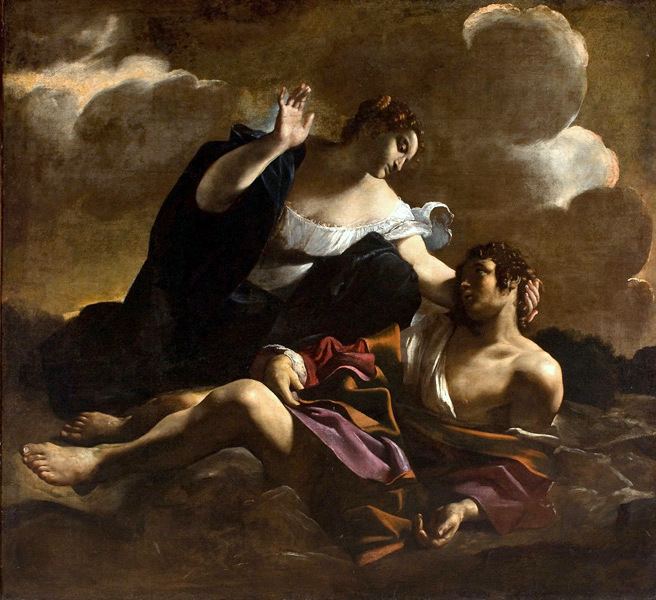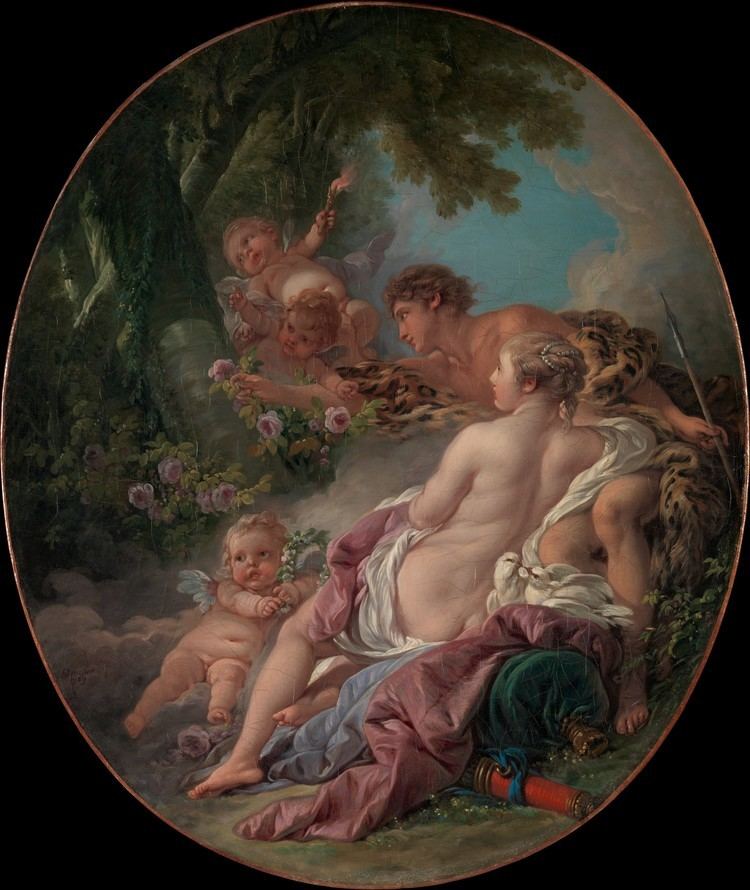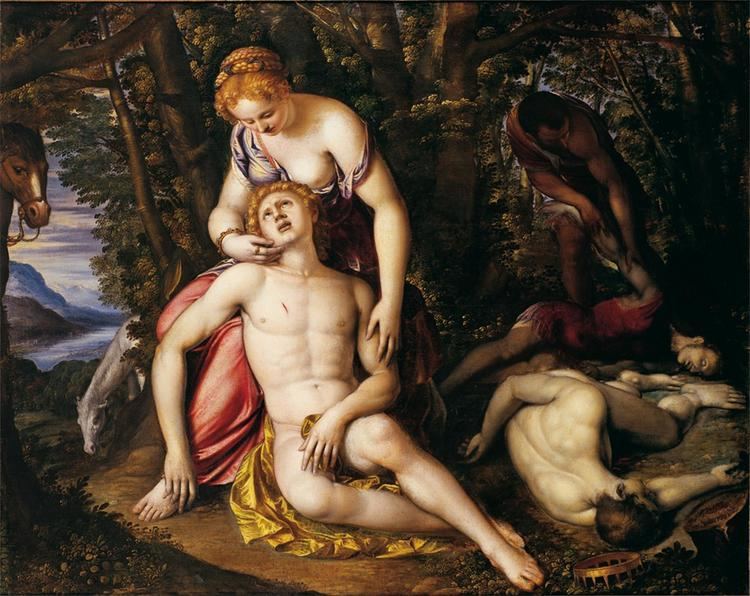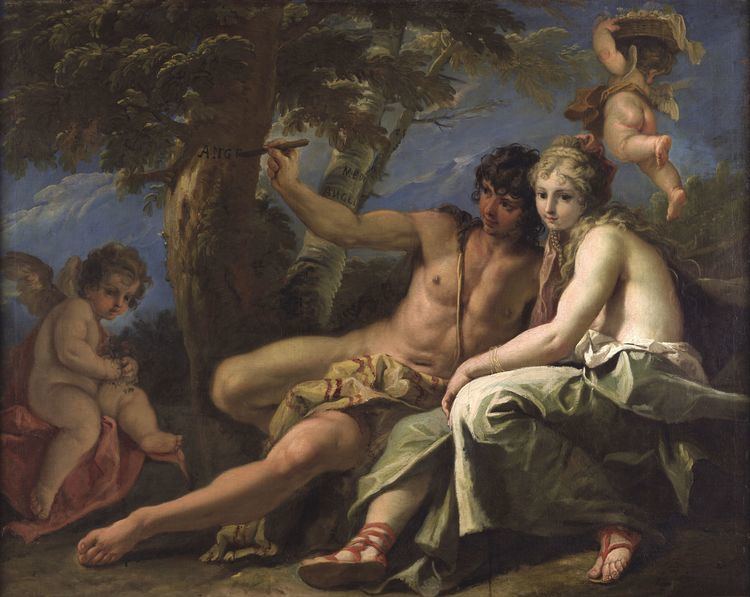 | ||
Angelica and Medoro was a popular theme for Romantic painters, composers and writers from the 16th until the 19th century. Angelica and Medoro are two characters from the 16th-century Italian epic Orlando Furioso by Ludovico Ariosto. Angelica was an Asian princess at the court of Charlemagne who fell in love with the Saracen knight Medoro, and eloped with him to China. While in the original work, Orlando was the main character, many adaptations focused purely or mainly on the love between Angelica and Medoro, with the favourite scenes in paintings being Angelica nursing Medoro, and Angelica carving their names into a tree, a scene which was the theme of at least 25 paintings between 1577 and 1825.
Contents
- List of artists depicting Angelica and Medoro
- List of authors writing about Angelica and Medoro
- Libretto by Andrea Salvadori
- Libretto by Metastasio
- Libretto by Leopoldo de Villati
- Libretto by Carlo Vedova
- Libretto by Gaetano Sertor
- Other
- References

List of artists depicting Angelica and Medoro

List of authors writing about Angelica and Medoro

Libretto by Andrea Salvadori
Libretto by Metastasio

Libretto by Leopoldo de Villati
Libretto by Carlo Vedova
Libretto by Gaetano Sertor
Other

References
Angelica and Medoro Wikipedia(Text) CC BY-SA
